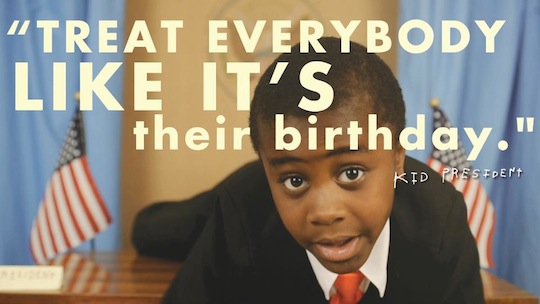2+2 always equals 4. This is based on accepted definitions of what constitutes identical groups of 2 and what results when you employ the mathematical operation of addition. The answer is what you and I and everyone label as 4. This is according to the basics of number theory which yields useful results for everyday application.
So what happens if you and I don’t agree on what constitutes a group of 2 or what label we ascribe to the sum? We might get something that looks like a misalignment of values. It’s a relief to know that you and I do agree on what makes 2 and that 2 and one more 2 gives both of us 4. We may now all return to living our lives.
When we arrive safely back where our realities intersect free from the terror of mathematical analysis we discover that many of us indeed do have something that looks like a math problem. It isn’t a math problem. But we treat it like one. This surfaces when we fail to see the seemingly same thing the same way as someone else.
Step 1: Recognize they don’t see it the way I do.
Step 2: Become threatened by the realization that they don’t see it the same way.
Step 3: Find the courage to stand my ground.
Step 4: Convince them that 2+2 does indeed equal 4 and that they just aren’t defining groups of 2 correctly.
Step 5: Show them how it’s really done.
Step 6: Dig in after they don’t miraculously switch their opinion.
Step 7: Either witness a relationship strain or worse or become closed to a new perspective or boldly go where most have gone before and do both.
It’s not a math problem. If it were then the facts, void of perspective other than the one true vantage, would be enough. But they never seem to be enough. It’s not a math problem. It’s a perspective problem.
A brief note about Step 2: Yes, you do feel threatened because if you didn’t you wouldn’t insist on correcting their math. Sometimes this comes under the cover of “trying to do what’s best for them and others” but that’s really a mask we don when we won’t admit that we feel threatened, that we’re figuratively xenophobic.
So if it’s a perspective problem then let’s investigate a different perspective for approaching the snake pit.
Step 1: Recognize they don’t see it the way I do. (Notice how we begin in the same place?)
Step 2: Ask myself, “Is this a math problem or a perspective problem?” If perspective (which when dealing with humans is more frequently the case), ask, “Do I know everything there is to know about this? Is there room for their view point?”
Step 3: Realize I never know everything and there’s very often room for another perspective without negating mine or me.
Step 4: Enjoy the dialogue and the more robust relationship I’m facilitating.
When we treat perspective problems like math problems we overload relationships. I think this happens unwittingly. Often both sides are scandalized by the other. Sometimes things are never the same again. This is a just cause for sadness.
The second Step 3 suggests your perspective on the issue isn’t negated by theirs. I’m not suggesting a relative approach to truth. I’ll turn to Roy H. Williams to help fill this out. I’ve heard Roy say the opposite of a profound truth isn’t something false but can be an equally profound but opposite truth. Two that come to mind are Justice/Mercy and Honesty/Loyalty. In both cases we’ve got virtuous truths that cut across the grain of the others. Have you considered that what the other person is standing behind might be as true as yours? Have you ever been a third party watching two perspectives collide, privy to more complete knowledge of the circumstances as a result, and realize both sides are simultaneously equally correct and incorrect? If they only knew what the other knew the conversation would be very different.
New information and new perspective often leads to new decisions, new attitudes, new behaviors.
Perhaps this is a good time to talk about constructive criticism. A shift but a natural one I think you’ll agree.
The difference between criticism and constructive criticism is whether or not you’re smiling when you drive the dagger between their shoulder blades. (I think I heard Roy say this one, too.) I’m not certain what the real difference is but I know that both feel pretty much the same. How constructive you’re being, how honorable your intentions are don’t matter one bit. Again, a quick personal inventory would help here.
Step 1: What’s my relationship with the person I’m considering “giving advice to?”
Step 2: Why am I considering speaking into their situation?
Step 3: Is my thought truly going to help them?
If they don’t think you have skin in the game then don’t go any further! What do I mean by skin in the game? I’m talking about someone who doesn’t have a strong tie to the thing they’re critiquing but has a deep respect and affection for you. They don’t care about your “thing” as much as you do but they care immensely for you and are grieved when you’re grieved.
Just because I’m close to them and they know I care doesn’t mean I should open my mouth. Some things just aren’t our place no matter how correct we are.
And, let’s make sure what we’re doing is actually helping. Really. Truly. Seriously. Don’t mail this one in.
If you feel you’re inventory is on the correct shelving, still consider holding your tongue! We have the ability to royally screw other people up. We pack bags for them that they may carry for the rest of their lives.
I’ve tried to do the math before. Several times. It’s never been pleasant. I’ve learned it’s not a math problem. It’s a person.
Wait a second, I’m a person…..and so are you….
Nah, that’s probably just a coincidence.
Now watch this message from Kid President. I assure you it will yield you far more than the 3 minutes and 31 seconds you’ll invest watching it.



